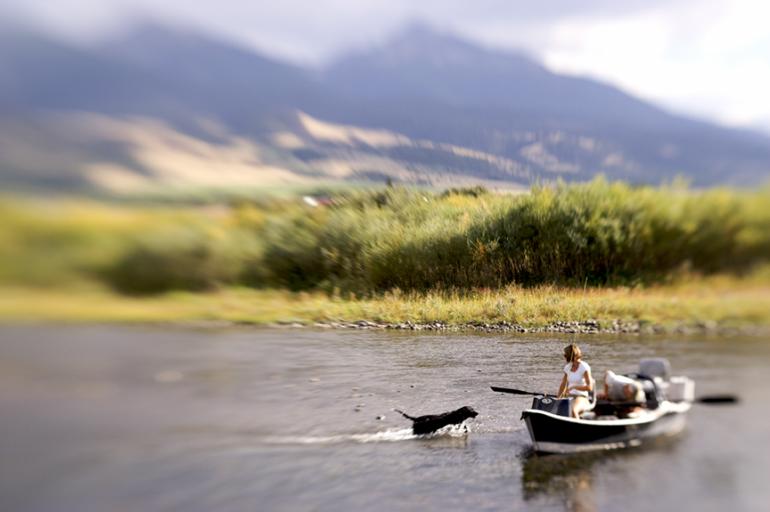Raring to Go
Easing your dog into spring activities
Spring means new opportunities for you and your faithful canine sidekick. To maximize adventures and minimize visits to the vet, be sure to slowly transition your dog from couch mode to weekend warrior. Lack of conditioning followed by sudden intense activity can lead to several common over-use injuries.
Tail Sprain
AKA limber tail, wet tail, or swimmer’s tail, this is an acute injury to the muscles at the base of the tail, characterized by a limp, sad-looking tail that either won’t wag or is curving downward several inches away from the body. The tail is often painful and may appear swollen at the base. This is seen frequently after long days of swimming or with hunting dogs in the fall. Symptoms usually last less than two weeks, and respond well to rest and pain medications (prescribed by your vet). If pain persists, radiographs (or x-rays) may be necessary, as exuberant waggers can fracture the bones of the tail.
Slipped Pads
Winter-softened pads are no match for rocks and dirt on newly exposed trails. Gradually increasing lengths of walks and hikes can help to increase the callus layers on the pads to prevent these injuries—which can be difficult to treat. If pads become injured, wash the wound well with lukewarm water and very mild soap, or rinse with contact saline. Hydrogen peroxide is never recommended for wounds—it kills healthy tissue.
Treat superficial injuries with a black-tea compress: place a wet tea bag over the clean pad and cover with a plastic baggie for 10 minutes. Natural tannins in tea combat infection and increase callus formation. Deeper injuries or wounds that may be infected require a trip to your veterinarian. Pad the injured paws with socks and to keep the wound clean until you are able to visit your vet.
Broken Toenails
When toenails grow too long, they change the way your dog carries its weight, which puts stress on the nails. Keeping nails clipped short is cheap insurance to prevent a broken and bleeding nail. Treat minor nail injuries with a pedicure and flour applied to the broken nail to stop the bleeding. Significant injuries, lameness, or repeat injuries should be treated by your vet. Infections may extend to the bone, and abnormal toenails can indicate more concerning problems, such as nailbed tumors or fungal/bacterial infections.
Dehydration and Muscle Cramping
Wearing shorts on a 50-degree day in April isn’t crazy: you’re acclimated to the low temperatures of winter. Your dog experiences similar acclimatization, but doesn’t have the luxury of changing into a tank top or carrying a water bottle. Always provide plenty of cool water, rest opportunities, and snacks on the trail. This is especially important early in the season, when muscular conditioning is low, and potential for injury is higher.
Most importantly, keep in mind that you are in control of the situation. Although lovable, loyal, and undeniably enthusiastic, dogs are terrible moderators. They will literally run, jump, and swim their way into overexertion, especially if they’re trying to keep up with wheeled or motorized activity. Please realize your pet’s limitations, even if it means bringing home a disappointed pup.
If your pet does become injured, please remember to NEVER give them human medications. NSAIDs (non-steroidal anti-inflammatory drugs) such as ibuprofen (Advil), naproxen (Aleve), and acetaminophen (Tylenol) can be toxic, and aspirin can cause stomach ulcers or other side effects. Your vet can prescribe a veterinary NSAID, which have fewer side effects and are easier to give, as they are usually chewable and flavored.
Michelle Pogge is a veterinarian at Banfield Pet Hospital in Bozeman.










